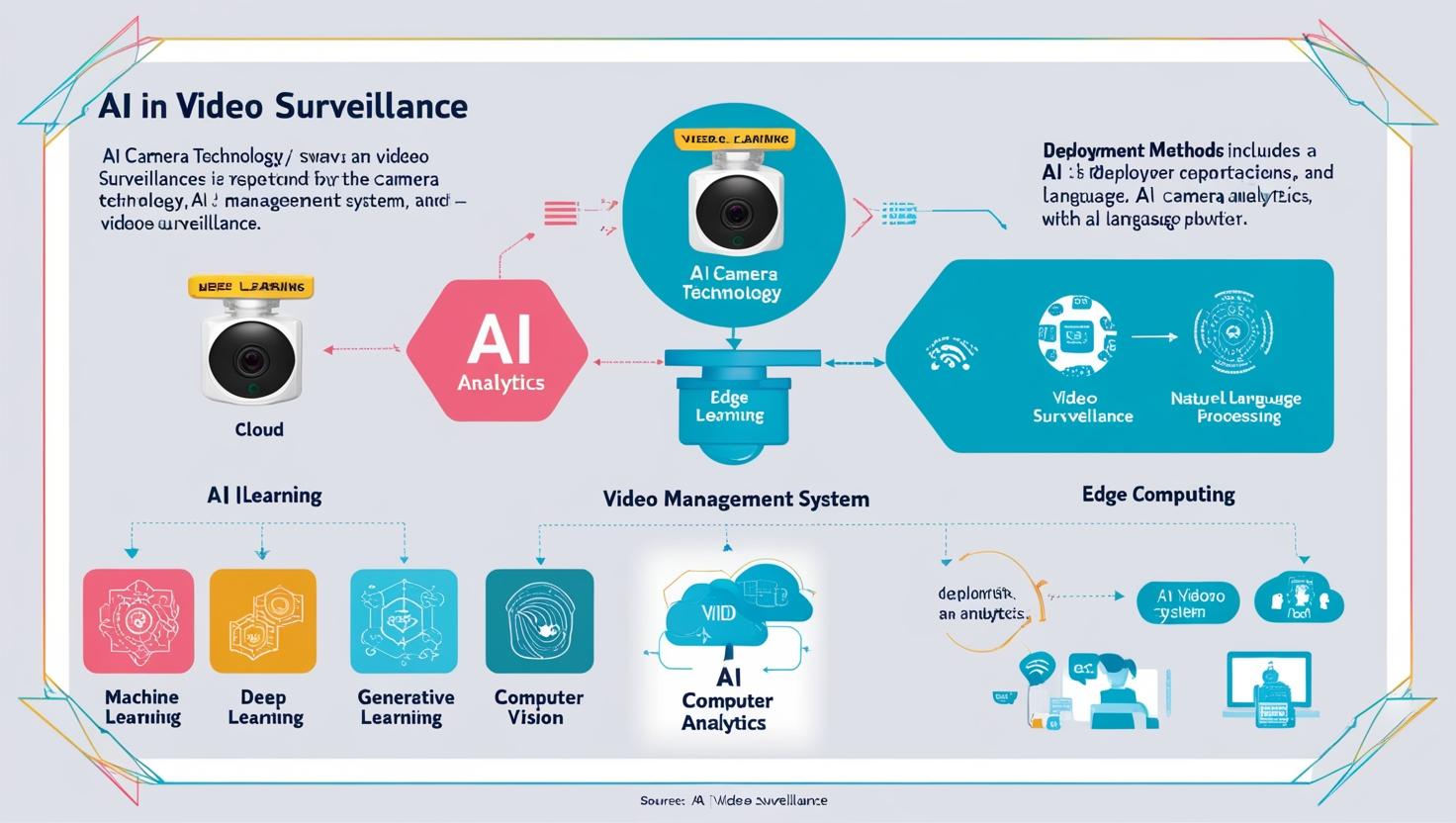The global AI in video surveillance market is undergoing a major transformation, driven by the integration of artificial intelligence (AI). Traditional surveillance systems, once passive tools for post-incident review, are now becoming intelligent, proactive, and predictive. AI-enabled video surveillance is not only redefining how security is approached—it’s also fueling a rapidly expanding market with applications across public safety, enterprise operations, and smart cities.
1. Heightened Security Demands in an Evolving World
With increasing concerns over crime, terrorism, and workplace safety, there is a growing need for smarter, faster, and more efficient security solutions. AI-powered video surveillance systems are capable of real-time threat detection, enabling authorities and businesses to respond to incidents as they happen—or even before they escalate.
Modern systems can detect suspicious behaviors, identify unauthorized access, and flag anomalies instantly. This proactive approach marks a shift from traditional surveillance, which often relied on manual monitoring and delayed responses.
2. Technological Advancements in AI and Computer Vision
The core driver of growth is the rapid advancement of technologies such as computer vision, deep learning, and machine learning. These technologies allow video surveillance systems to do more than just record—they can now interpret what they see.
From facial recognition and license plate identification to motion tracking and behavior analysis, AI systems are becoming more accurate and reliable. They can identify patterns, learn from data, and improve over time—creating self-optimizing security networks.
The AI in video surveillance industry is expected to expand significantly, rising from USD 3.90 billion in 2024 to USD 12.46 billion by 2030, with a compound annual growth rate (CAGR) of 21.3% between 2025 and 2030. This rapid growth is fueled by the growing need for advanced security solutions across multiple industries. As urban populations continue to increase and awareness of security risks becomes more widespread, governments, businesses, and individuals are increasingly investing in cutting-edge AI-powered surveillance technologies.
Download PDF Brochure @ https://www.marketsandmarkets.com/pdfdownloadNew.asp?id=84216922

3. Proliferation of Smart Cities and Infrastructure Projects
Smart city initiatives around the world are increasingly incorporating AI-powered surveillance to improve urban management and public safety. Traffic monitoring, crowd control, incident response, and environmental observation are just a few of the use cases.
Surveillance systems are now integrated into broader urban data platforms, feeding into centralized command centers that oversee everything from transportation to emergency services. As governments invest in digital infrastructure, the demand for AI-enhanced video surveillance continues to grow.
4. Growth in Commercial and Industrial Applications
Beyond public safety, industries such as retail, manufacturing, logistics, and healthcare are leveraging AI in surveillance to improve operations and reduce risks. In retail, AI helps prevent theft, analyze customer behavior, and optimize store layouts. In industrial settings, it enables predictive maintenance, access control, and compliance monitoring.
The ability to generate real-time insights from video data makes surveillance systems valuable not just for security, but also for business intelligence.
5. Edge Computing and Cloud Integration
The rise of edge computing—processing data directly at the camera or nearby device—has drastically improved the speed and efficiency of AI surveillance. Edge AI allows real-time analysis without the need to send data to distant cloud servers, which reduces latency and bandwidth consumption.
At the same time, cloud platforms enable centralized management, scalable storage, and remote access, making it easier for organizations to monitor multiple sites. Many deployments now use hybrid models, combining the responsiveness of edge computing with the scalability of the cloud.
6. Regulatory and Compliance Drivers
As security threats grow more sophisticated, regulations are evolving to mandate improved surveillance standards. From critical infrastructure to public venues, many regions are implementing policies that require AI capabilities in surveillance for early threat detection and compliance monitoring.
Simultaneously, privacy concerns are pushing vendors to develop ethical, regulation-compliant AI solutions—such as anonymized video feeds, role-based access controls, and data encryption—ensuring responsible use without compromising personal rights.
7. Drop in Hardware Costs and Improved Form Factors
The affordability of high-performance cameras, GPUs, and AI chips has lowered the barrier to entry for AI video surveillance systems. What was once considered premium technology is now more accessible to mid-sized businesses and municipal governments. Smaller, smarter, and more energy-efficient devices are making it easier to scale deployment across larger areas.
The AI in video surveillance market is rapidly gaining momentum due to a perfect storm of rising security needs, technological advancements, and broader digital transformation initiatives. As systems become smarter, faster, and more accurate, they are evolving from passive recording tools into essential components of proactive security and operational intelligence.
With continued investment and innovation, AI-powered surveillance is set to become a cornerstone of modern infrastructure, reshaping not only how we protect spaces but also how we interact with them.
Frequently Asked Questions (FAQ) – AI in Video Surveillance Market
Q1: What is AI in video surveillance?
A: AI in video surveillance refers to the use of artificial intelligence technologies—such as computer vision, machine learning, and deep learning—to analyze video footage in real-time, detect threats, recognize patterns, and provide actionable security insights.
Q2: Why is the AI video surveillance market growing so quickly?
A: The market is expanding due to rising security concerns, technological advancements in AI and computing, increasing adoption in smart cities and enterprises, and falling hardware costs that make AI solutions more accessible.
Q3: What are the key benefits of AI-powered surveillance systems?
A: These systems offer faster and more accurate threat detection, reduce the need for constant human monitoring, improve response times, and provide valuable insights for operational efficiency across various industries.
Q4: How do edge computing and cloud platforms impact AI video surveillance?
A: Edge computing enables real-time analysis close to the camera, reducing latency and bandwidth needs, while cloud platforms offer scalable storage and centralized management. Hybrid models often combine both for optimal performance.
